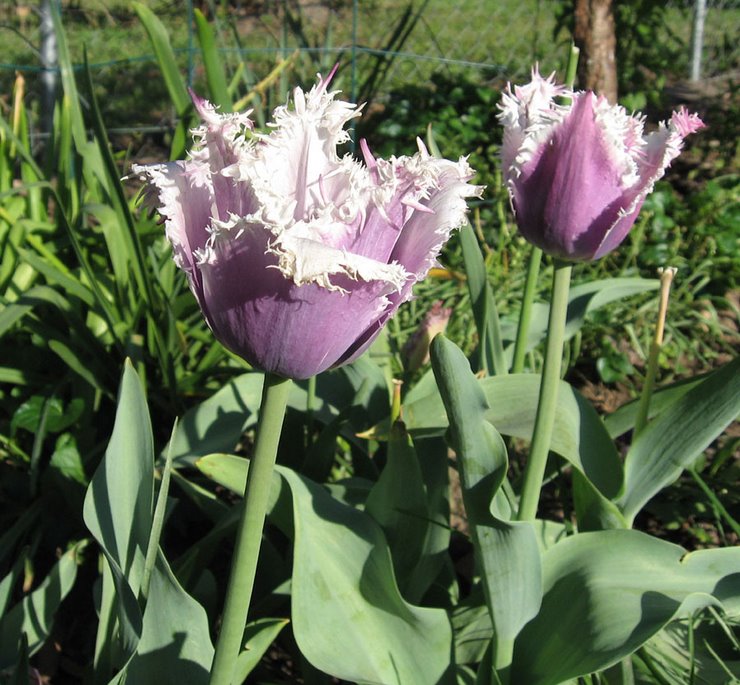 |
| Grape hyacinths |
Because the corn gluten is not a herbicide, I do have weeds that got started between treatments. I hand-pull these. It's more work than just spraying a weed-killer, but it sure is a lot safer and healthier! Because I am still having weeds after several years of twice-yearly application, I have done some study on the life-cycles of some of the weeds I tend to have. It looks like I need to adjust the timing of the corn gluten applications to fit those particular weeds. I plan to discuss the details in later posts.
Timing the application is important for corn gluten to be effective as a weed suppressant. It works by inhibiting root formation on the seed as it opens up to sprout. Without roots, the seedling dries up and dies. If weeds have developed their first true leaves they may be past the point of being affected by corn gluten. One application of corn gluten suppresses seed germination for about 4-6 weeks. The greatest effectiveness is when corn gluten is used year after year.
The corn gluten breaks down slowly and naturally to make nutrients available to your grass. As a slow-release fertilizer, it avoids the concern of burning plants with too much all at once. Corn gluten is about 10% nitrogen, which is the nutrient most beneficial to lawns. With twice-yearly application, and using a mulching mower to recycle grass clippings, you may not need to apply very much of other fertilizers to your lawn. Corn gluten also encourages deep root growth, which helps grass cope better with drought and heat.
Check the package label of corn gluten products. Some use a higher concentration of the corn gluten meal than others. Look for one with about 98% corn gluten. Plan on getting enough to apply about 20-40 pounds per 1,000 square feet of lawn.
Be careful not to apply corn gluten to any area where you plan to plant new grass from seed, or in garden beds where you plan to start flower or vegetable seeds in the next couple of months. It does not discriminate between seeds of desireable and undesireable plants. It does not harm established plants, and will actually help to fertilize them.
After you apply corn gluten to your lawn or garden, water it in a bit, enough to moisten the top inch or two of soil. Then let it dry out. It would be best not to water it the next 2-3 days. If it stays moist, weed seedlings may be able to overcome the effects of the corn gluten. Extended wet periods will reduce the effectiveness of corn gluten in suppressing weeds from forming.
Using a natural fertilizer rather than inorganic chemicals also helps improve the soil and encourage the presence of earthworms. Earthworms are an enormous boon to a yard, as their tunnels aerate the soil, and their droppings are a great fertilizer.
This choice, to use organic weed control rather than chemical, is also one element in dealing with my allergies. Exposure to the strong chemicals in herbicides and pesticides can be a factor in triggering allergies. I certainly don't need any further issues in this!

No comments:
Post a Comment